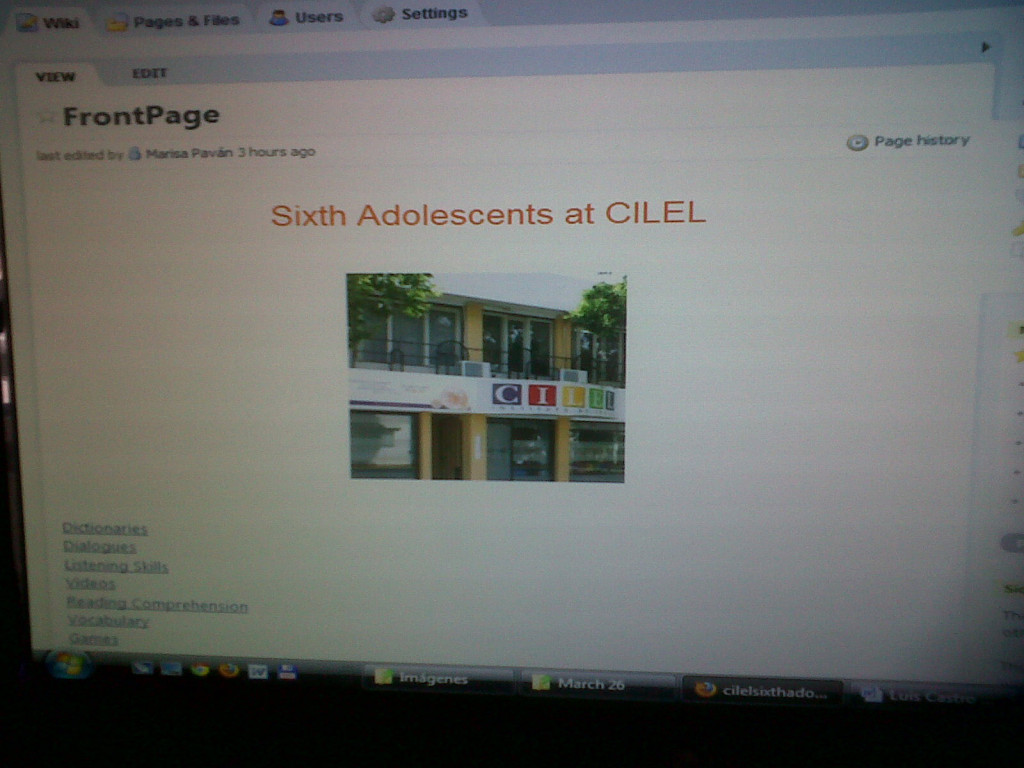 Meeting Students’ Needs through Small Changes
Meeting Students’ Needs through Small Changes
by Marisa Pavan.
The theme for this blog issue, “Small Changes, Big Results,” based on John Fanselow’s new book, has made me reflect on my teaching practice this year starting in March and the small changes I’ve made so far.
Mr Fanselow states in his book, “As you and your students explore distinctive activities, you will realize that as helpful as what others tell us is, we each have to discover new ways and worlds on our own.” In order to boost my teenage students’ skills, I’ve included some adjustments suited to their needs.
There are opinions for and against the use of textbooks and in my case there is no choice but use them. I do my best to adapt the tasks presented in the textbooks we have for my students to really benefit from them.
One of the little changes I’ve introduced is intended for my students to improve reading skills. After reading and analysing a text from the book and making sure my students understand all the new vocabulary, I assign the paragraphs forming parts of it to each pair of students for them to read silently for some minutes; then they close their books and share what they remember with the whole class. When I introduced the task, my students seemed to enjoy it and felt confident because they were supposed to say anything they were able to remember and do so in pairs. In this way, the introverted ones did not feel exposed.
Another task I’ve been using to help my students practise vocabulary is dictogloss, with a small change. First I select a short text that includes recently studied vocabulary, just ten or twelve sentences. I explain the task to my students for them to know what it is they are supposed to do: while I read the text with my natural speed, in a loud voice for the whole group to hear, they should take down notes of the most important words. I explain to them that it is not a dictation and suggest writing mainly nouns and verbs, one next to the other. I tell my students they should not try to write whole sentences because they would run the risk of missing some information. Then I read the text for a second time and tell my students to include missing words in their notes. Finally, they are supposed to write their version of the short text I read using their notes and anything that would be missing. The small change I’ve introduced is the opportunity for my students to re-write the text in pairs (instead of doing so individually), which gives them confidence to write the text and at the same time provides a great opportunity to foster interaction and negotiation skills. To correct the text, sometimes I ask them to read it in a loud voice or I tell them to exchange their versions among pairs and a different pair should make comments on their peers’ text.
Usually, textbooks include articles with reading comprehension questions to check that students understand it. The small change I’ve introduced at this stage involves students underlining the answers to those questions in the text and sharing the replies orally. Apart from integrating reading and speaking skills, students need to rephrase those answers, which contributes to developing their fluency in a natural way.
Comparing teenagers in the past and those I’m teaching at present, I’ve found that some years ago, when my students received corrected vocabulary and grammar tasks, they immediately checked the mistakes they had made and investigated the lexical items or the grammar topics in a book and dictionary so as to improve themselves. On the other hand, my teenager students now receive the corrected tasks, have a quick look at the mistakes, and put the sheet in their folders without further consideration. Given this situation, I decided to introduce a small change when returning my students corrected assignments. Apart from pinpointing the error, I assign each student a task based on their mistakes. They are supposed to find out a certain grammar topic or to look up a certain word in the dictionary, analyse it, and then hand in examples containing their findings. In this way, I help them do the self-correction they need in order to improve themselves.
All in all, I’m convinced that a teacher needs common sense to discover their students’ needs and meet them in a way that contributes to their learning process.





